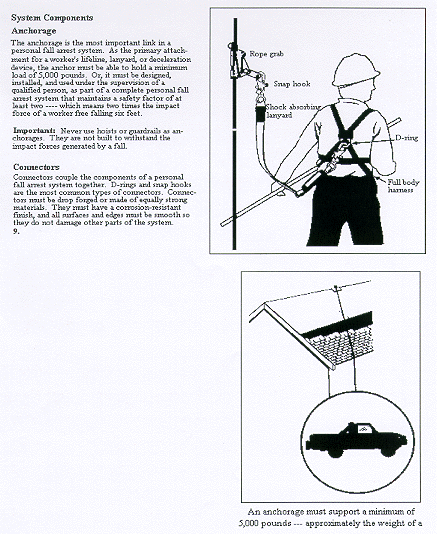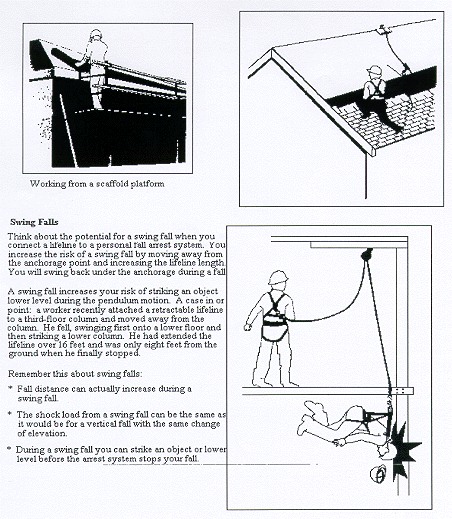1926 Subpart M
Overview
OCCUPATIONAL SAFETY AND HEALTH
1926 Subpart M
Overview for Subpart M
Fall Protection
What are the most frequently cited serious violations of the fall protection provisions?
- Failure to protect workers from falls of 6 feet of more off unprotected sides or edges, e.g. floors and roofs. (1926.501(b)(1); (b)(10); and (b)(11))
- Failure to protect workers from falling into or through holes and openings in floors and walls. (1926.501(b)(4) and (b)(14))
- Failure to provide guardrails on runways and ramps where workers are exposed to falls of 6 feet or more to a lower level. (1926.501(b)(6))
What are some effective control measures that can be used for the serious hazards for which OSHA has most frequently cited employers?
- Determine if any of the work (even a small portion) can be performed at ground level or if a crane can be used to lift assembled portions (e.g., sections of roofing) into place, eliminating or reducing the number of workers exposed to falling.
- Tether or restrain the worker so he or she cannot reach the edge thereby eliminating the fall hazard.
- Consider the use of aerial lifts or elevated platforms to provide better working surfaces rather than walking top plates or beams.
- Erect guardrail systems, warning lines, or control line systems to protect workers from falls off the edges of floors and roofs.
- Place covers over holes as soon as they are created if no work is being done at the hole.
- Use safety net systems, or personal fall arrest systems (body harness).
What good work practices can be used to provide protection from falls when conventional systems are not feasible?
- Designate one of the workers as a safety monitor to observe employees and to alert employees of hazards that could cause them to trip or fall.
- Establish a designated area or control zone in which workers when conventional fall protection systems such as guardrails
and personal fall arrest systems are not feasible or create a greater hazard.
- Store materials in an area away from where workers are exposed to fall hazards.
Illustration M-1
Equipment
 Illustration M-1 (Continued)
Illustration M-1 (Continued)
 Illustration M-1 (Continued)
Illustration M-1 (Continued)
 Illustration M-1 (Continued)
Roof Brackets Being Used With A Personal Fall Arrest System
Illustration M-1 (Continued)
Roof Brackets Being Used With A Personal Fall Arrest System

|
